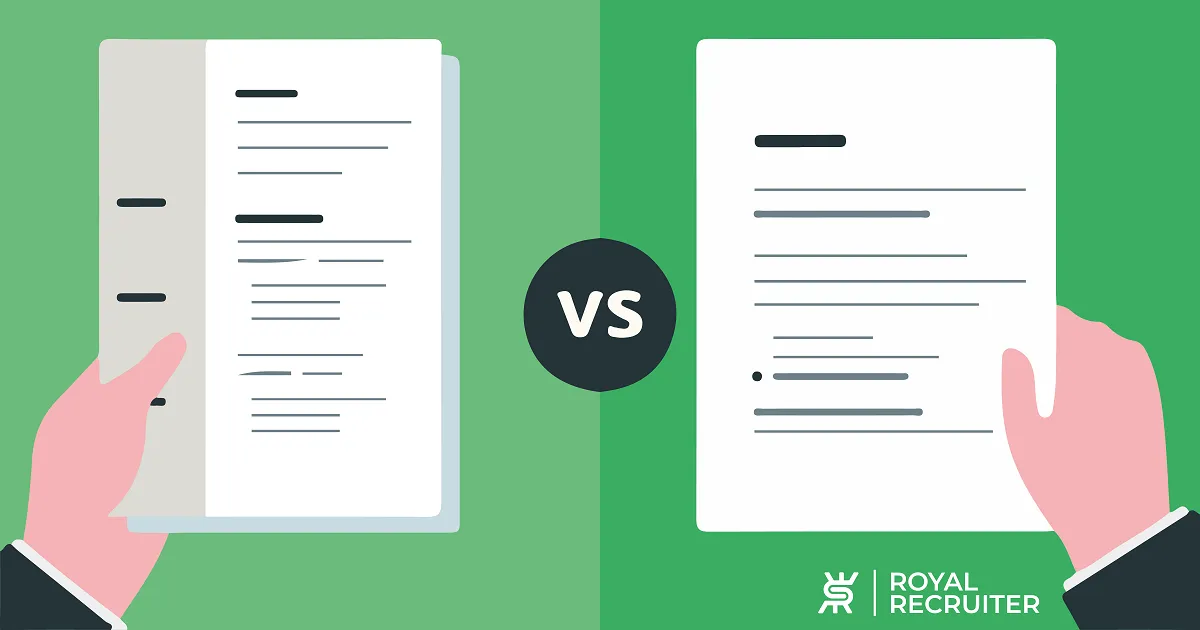What’s the Core Purpose of Each Document
Understanding the fundamental differences between a resume and a cover letter is crucial for any job seeker. Both documents are essential components of a job application, but they serve distinct purposes. A resume offers a snapshot of your professional history, while a cover letter provides context and showcases your suitability for a specific role. Knowing how each document functions allows you to present yourself effectively and increase your chances of landing an interview. The resume is the ‘what’ while the cover letter is the ‘why’ in the application process.
Resume Focuses on Past Accomplishments
The primary goal of a resume is to provide a concise overview of your past experiences, skills, and achievements. It is a factual document that highlights your career journey, detailing your work history, educational background, and relevant skills. The focus is on what you have done and what you have achieved in previous roles. The resume acts as a summary, allowing potential employers to quickly assess your qualifications and suitability for a position. The resume should be updated and tailored to each job, highlighting the most relevant information. A well-crafted resume helps you make a strong first impression by showcasing your value to the employer.
Cover Letter Highlights Future Potential
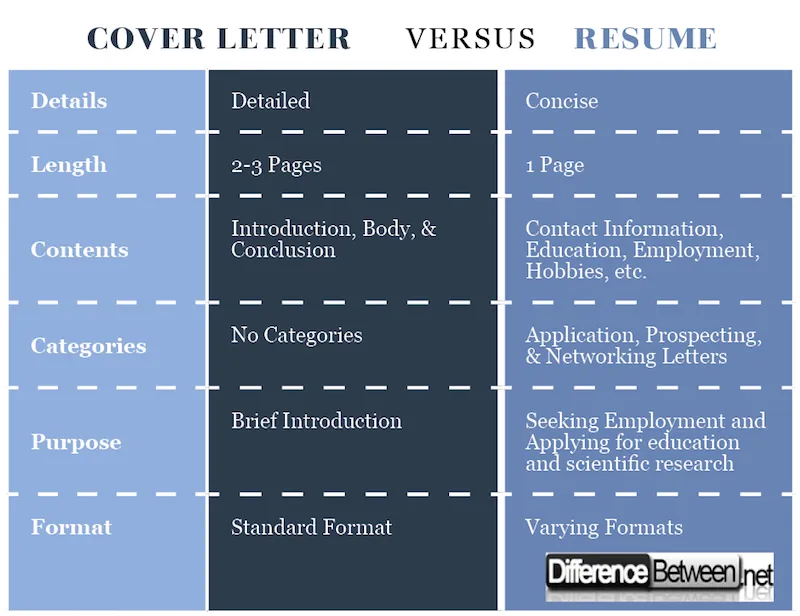
In contrast, the cover letter is designed to demonstrate your interest in a particular job and explain why you are a good fit for the role and the company. It should emphasize your enthusiasm and articulate how your skills align with the employer’s needs and future goals. It’s an opportunity to tell your career story and explain the ‘why’ behind your application. The cover letter highlights your career aspirations and demonstrates how your past experiences have prepared you for the position. This document allows you to express your personality, motivation, and communication skills, providing a personal touch that a resume cannot. A compelling cover letter increases the likelihood of your application getting the attention it deserves.
Resume - A Summary of Skills and Experience
A resume serves as a concise summary of your skills, experience, education, and accomplishments. It’s a structured document that presents your qualifications in a clear and easy-to-read format. Typically, it starts with a summary or objective, followed by your work history, education, and skills sections. The work experience section details your previous roles, responsibilities, and achievements, often using bullet points to highlight key accomplishments. The skills section lists your technical, soft, and other relevant skills. A well-organized resume makes it easy for employers to quickly assess your qualifications, making it more likely for you to be considered for an interview. It is designed to be a quick reference guide to your career.
Cover Letter - Telling Your Career Story
The cover letter provides you with the opportunity to tell your story and explain why you are the best candidate for the job. It allows you to connect your skills and experiences to the specific requirements of the role and the needs of the employer. You can elaborate on experiences that are not as fully detailed in your resume. It allows you to showcase your personality, enthusiasm, and writing skills. In the cover letter, you can address how your career goals align with the company’s mission, and what you hope to contribute if hired. This document is an opportunity to demonstrate your ability to communicate effectively and persuade the hiring manager that you are a strong fit.
Resume’s Length and Format
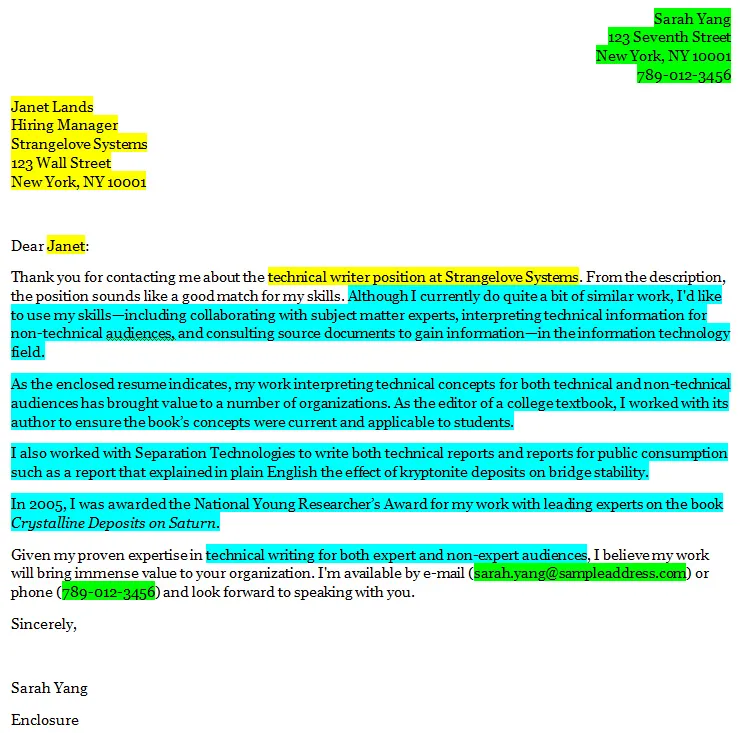
The format and length of a resume are very important to potential employers. Resumes are designed to be easy to scan quickly to determine if you are a good fit for the position. The layout should be clean and clear, using headings, bullet points, and white space to enhance readability. Choosing the right format depends on your experience level. For entry-level candidates, a functional resume might be appropriate, while experienced professionals may opt for a chronological format. Regardless of the format, the goal is to present your information in a way that is both informative and visually appealing. Consistency in formatting is vital to make the resume look professional and polished.
Concise Resume Format for Easy Reading
A resume should be concise, allowing recruiters to quickly grasp your qualifications. Focus on relevant information, omitting anything that isn’t directly related to the job you are applying for. Use clear, concise language, and avoid long paragraphs. Bullet points are your best friend in this situation, and use them to highlight your accomplishments and responsibilities in each role. A well-formatted resume with clear headings, a logical flow, and plenty of white space ensures that recruiters can easily find the information they are looking for. Aim for a balance between detail and brevity, making sure that the resume is informative without being overwhelming.
Resume Length Best Practices
The ideal length of a resume is typically one to two pages. For entry-level candidates or those with limited experience, one page is usually sufficient. Experienced professionals with extensive work histories may need a two-page resume. However, it is important to ensure that every detail on your resume is relevant and adds value. Avoid including irrelevant or outdated information just to fill space. A shorter, focused resume is often more effective than a longer one with unnecessary details. Always tailor your resume to the job you are applying for, focusing on the skills and experiences most relevant to the role.
Cover Letter’s Flexibility in Length
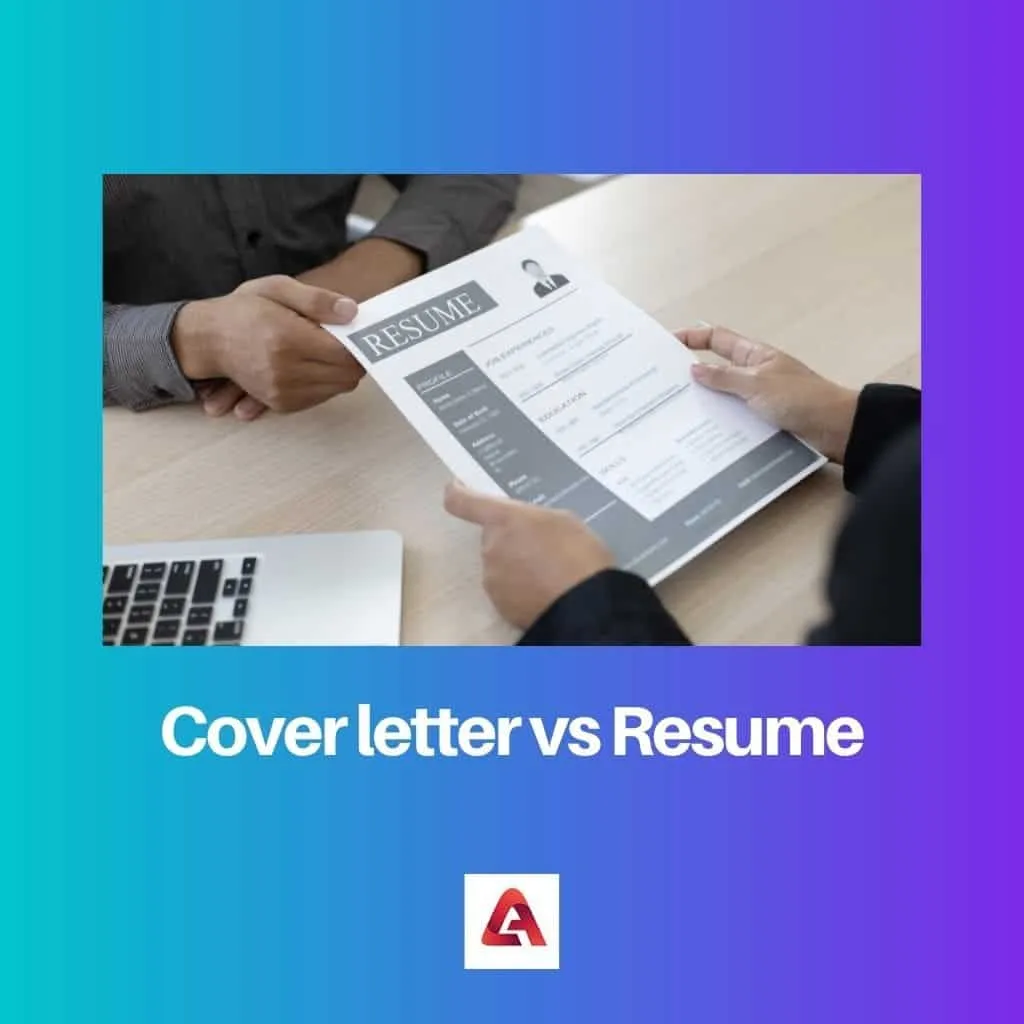
Cover letters typically range from three to five paragraphs, usually about half a page to a full page in length. The length of your cover letter can vary depending on the job and your experiences. The goal is to provide enough context and detail to showcase your suitability without overwhelming the reader. You should include an introductory paragraph, two or three body paragraphs, and a concluding paragraph. Each paragraph should focus on a specific aspect of your qualifications or your fit for the role. It’s important to strike a balance between being detailed and being concise. The cover letter’s length is flexible, but it needs to be engaging from start to finish to capture the hiring manager’s attention.
Cover Letter Customization and Tailoring
Every cover letter should be customized to the specific job you are applying for. This means reviewing the job description, understanding the company’s needs, and tailoring your letter to address those requirements. Make sure to highlight the skills and experiences that are most relevant to the role, and use keywords from the job posting. You can showcase your personality and enthusiasm. Use the cover letter to explain any gaps in your employment history, or to elaborate on experiences that are not as thoroughly detailed in your resume. Take the time to research the company and personalize your letter to demonstrate your genuine interest in the opportunity.
Resume’s Scope and Content
The content of a resume is focused on providing a factual overview of your professional and educational background. It typically includes sections on work experience, education, skills, and sometimes a summary or objective statement. The work experience section should list your job titles, company names, dates of employment, and a bulleted list of your responsibilities and accomplishments in each role. Skills sections highlight both hard and soft skills relevant to the job. The education section should include your degrees, certifications, and any relevant coursework. It should be a thorough summary of your experience to impress the reader.
Resume’s Emphasis on Skills and Experience
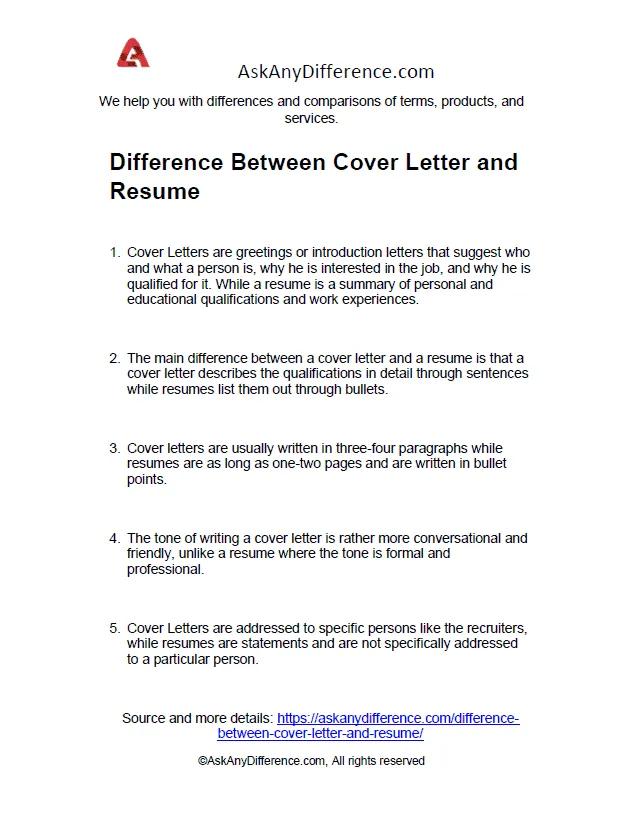
The primary focus of a resume is your skills and experience. Showcase your abilities by detailing the tasks you performed in each job and the results you achieved. Use action verbs to describe your accomplishments, and quantify your achievements whenever possible (e.g., ‘Increased sales by 20%’). Highlight the skills that are most relevant to the job, and consider including a skills section to make it easy for recruiters to identify your expertise. Tailor the skills and experiences you highlight to align with the requirements of the job description. Make sure the skills section is easy to read and understand.
Cover Letter - Showing Personality and Enthusiasm
The cover letter offers the opportunity to express your personality and enthusiasm for the job. It’s a chance to show the hiring manager that you are more than just a list of qualifications. Start by addressing the hiring manager by name if possible, and tailor your letter to show your understanding of the company and the role. Explain why you are interested in the specific opportunity and what motivates you to apply. Express your personality through your writing style and highlight any relevant personal interests or achievements. A well-written cover letter demonstrates your communication skills, as well as your fit with the company culture.
Resume vs Cover Letter Tone and Style
The tone and style of a resume and cover letter differ significantly. A resume is a formal document that needs to be professional. Your cover letter lets you write in a style that shows your personality and enthusiasm. Maintaining the right tone in each document is vital to conveying a professional image and making a positive impression on hiring managers. A resume should be direct, concise, and focused on facts and achievements. A cover letter allows you to be more engaging, expressive, and persuasive.
Resume’s Formal and Concise Tone
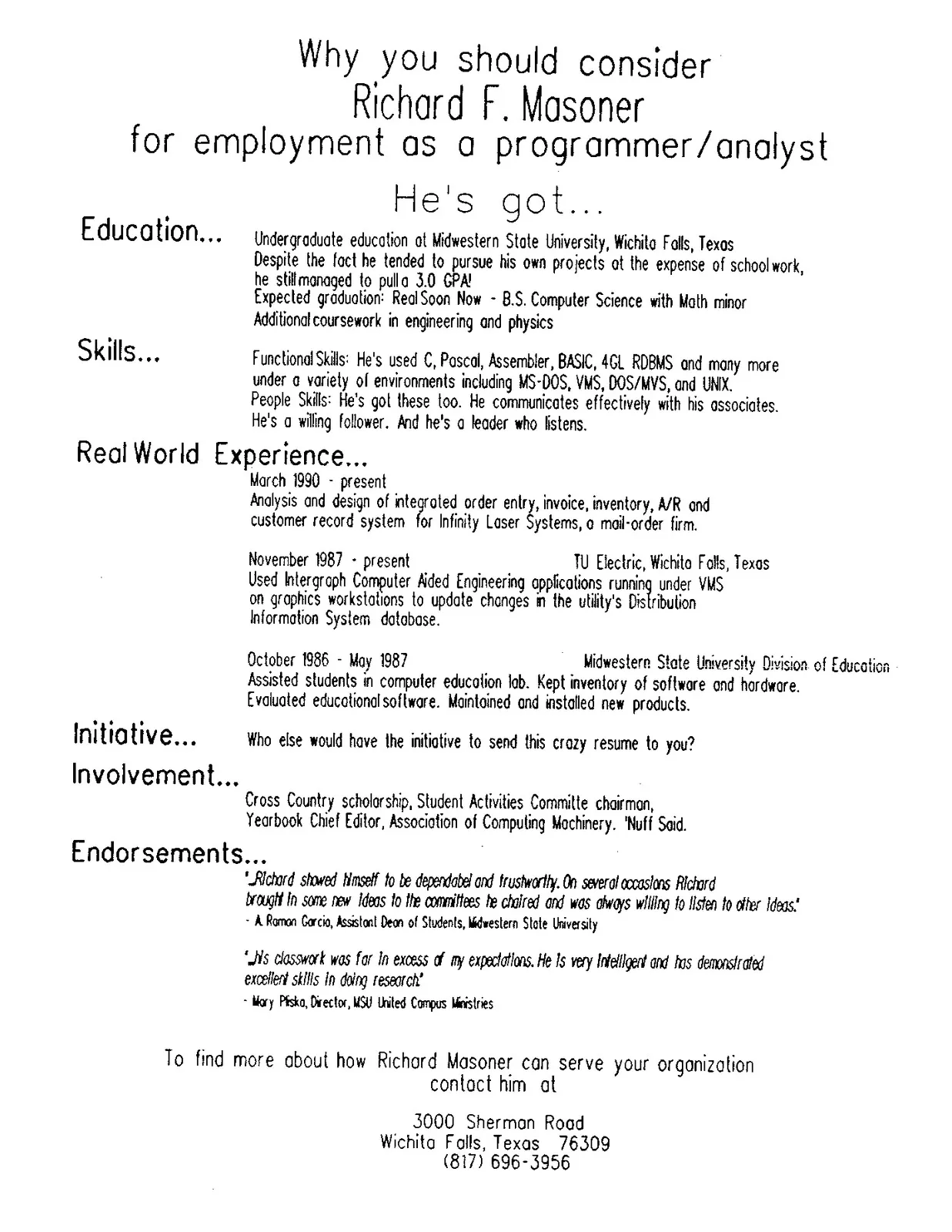
The tone of a resume should be formal, professional, and concise. Use clear, straightforward language and avoid slang, jargon, or overly complex sentences. Keep the focus on your qualifications and achievements, using action verbs to describe your responsibilities and accomplishments. Make sure to proofread your resume carefully to eliminate any grammatical errors or typos. A formal tone makes your resume look professional and shows that you pay attention to detail. The goal is to present your information in a way that is easily understood by recruiters.
Cover Letter’s Approachable and Engaging Style
The tone of a cover letter should be approachable, engaging, and enthusiastic. You can express your personality and connect with the reader in a more personal way. Use a conversational tone, but maintain a professional demeanor. Show your genuine interest in the job and the company by using specific details and anecdotes. Use the cover letter to showcase your communication skills, highlighting your ability to write persuasively and expressively. This document is your chance to make a positive impression by demonstrating your enthusiasm and expressing your personality.
When to Use Each Document
Both the resume and cover letter are essential parts of the job application process, but they are used at different times. It’s important to have both ready for your job search. The resume is primarily used to provide an overview of your qualifications to prospective employers. Your cover letter serves to show why you are a good candidate and provide the application with a personal touch. Understanding when and how to use each document will help you maximize your job search. Both are crucial for a successful job application.
Resume for Application Process
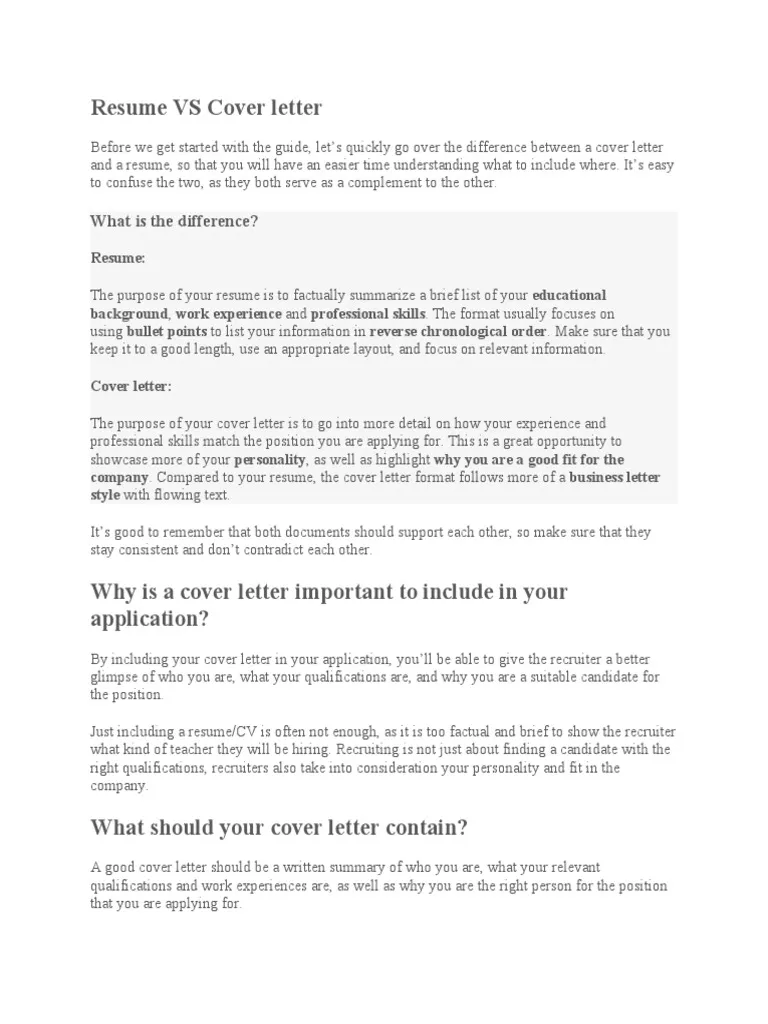
The resume is typically submitted with the initial application. It provides recruiters and hiring managers with a snapshot of your experience, skills, and education. Many employers require a resume to be uploaded through their online application portals. Your resume is reviewed before a cover letter. Ensure your resume is tailored to each job. The resume helps you get through the first stage of the application process, setting the stage for consideration for an interview. Having an up-to-date, well-crafted resume is crucial for making a positive first impression and increasing your chances of getting an interview.
Cover Letter to Introduce Yourself
The cover letter is used to introduce yourself to the hiring manager and express your interest in the role. It accompanies your resume, providing context and elaborating on the qualifications and experiences listed in the resume. In the cover letter, you can explain why you are a good fit for the job and the company. You can highlight your relevant skills, experiences, and any accomplishments that are not fully detailed in your resume. A well-written cover letter can make your application stand out from the competition, leading to an interview. The cover letter is your opportunity to provide a more in-depth introduction of yourself.
Resume vs Cover Letter - Key Takeaways
Understanding the distinctions between a resume and a cover letter is vital for any job seeker looking to make a strong impression. A resume is a summary of your skills, experience, and accomplishments, designed to provide a concise overview of your qualifications. A cover letter, on the other hand, is designed to tell your career story, demonstrate your interest in the job, and highlight your suitability for the role. Both documents work together to present you as a top candidate. Focusing on clear formatting, using the right tone, and tailoring each document to the specific job can increase your chances of success in the job search process. Knowing these differences will help you make a positive impression.
